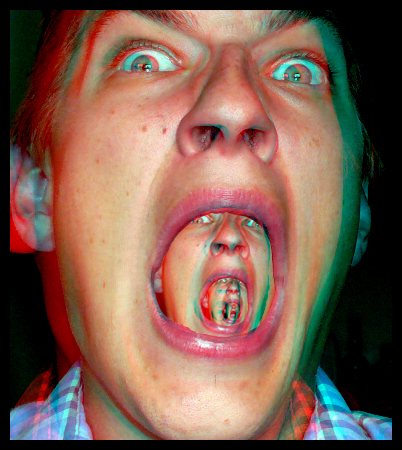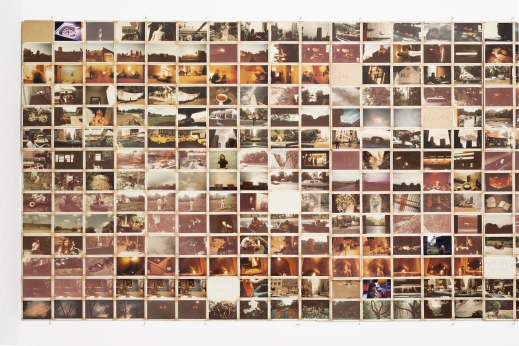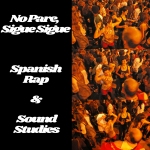Article
The Queer Body as Time Machine
Tara East
Abstract
This paper explores the ways that time travel narratives conceive of, and trouble, emerging notions of the gendered body. The paper suggests a reading of time travel narratives through the lens of Haraway’s theories of cyborg identity and José Esteban Muñoz’s concept of a queer utopia. The paper argues that a time-travelling body is, always and already, a cyborg body whose material or biological form is hybridised or altered not only through literal re-makings (surgical and supernatural alterations and evolutions) but also through the ways in which time travel changes the body’s relationship to time, knowledge, understanding and selfhood.
Despite the ways in which the cyborg body of time-travel narratives escapes the limitations of the body trapped in a time and biology, the paper nevertheless argues that few, if any, time travel narratives lead to an experience (for reader or character) of Muñoz’s queer utopia.
Keywords
Science Fiction; Queer Utopia; Transgender; Time Travel
FULL TEXT
Introduction
New Wave authors of the 1960s, Joanna Russ, Samuel Delany, Ursula Le Guin and Thomas Disch were among the first to explore LGBTQ (lesbian, gay, bisexual, transgender, and queer) themes within their science fiction narratives. Since then, science fiction has continued to challenge gender norms and to explore broader representations of other bodies and sexual preferences. Science fiction lends itself to queer and speculative writing due to its innately flexible and experimental structure, and its ability to step outside of the conservative restraints associated with other forms of literature.
Whether a person identifies their sexual behaviours, physical attractions or sexual fantasies as lesbian, queer, bisexual, transgender or the nuanced categories of mostly heterosexual, mostly homosexual, these labels have been grouped beneath the acronym LGBTQ as a way to describe any individual who identifies as anything other than heterosexual (Wagaman 2016).
The following paper focuses on how time travel narratives (a category within science fiction) challenge gender norms through experimental representations of women’s bodies and sexuality. Narratives centred on time loops offer a playful and paradoxical structure that allows protagonists to move outside of linear time and in between bodies: characteristics that exist in both Robert Heinlein’s ‘All You Zombies’ and Nino Cipri’s ‘The Shape of My Name.’ Read through the lens of Donna Haraway’s theory of cyborg bodies and José Esteban Muñoz’s concept of a queer utopia, these short stories contribute to the conversation through their experimental approach to bodies, acceptance, and the desire for paradise.
The body, as Elizabeth Grosz defines it, is a “concrete, material, animate organization of flesh, organs, nerves, and skeletal structure” (1995 p. 104). A human body is also the result of socialisation, practiced and learned coordination, the development of a psyche, sexual desires, social skills and the ability to be “part of a social network” (1998 p. 104). Bodies are also categorised by gender. For the purposes of this paper, I will be using Rose Marie Hoffman’s reframing of gender identity as “gender self-confidence” with a specific focus on women and the body (Hoffman 2000, p. 349). An individual may classify themselves as a woman or man, if they meet their own “personal standard of femininity” or masculinity (Hoffman 2000 p. 349) and if they themselves feel competence as a woman. This personal definition is not derived from gender norms, but the individual’s own “personal and idiosyncratic” definition. However, it must be acknowledged that this definition may be influenced by external organisations, structures, relationships, even time and space.
Time, Space and the Body
The present moment favours the general norm: white, heterosexual and male. The equality sought by those who have been isolated and rejected—the minorities who have been oppressed because of their gender, sexual orientation and race—exist in a future space (Muñoz 2009). However, Jose Esteban Muñoz argues in his work Cruising Utopia that the future can be experienced in the present through performance. Muñoz’s concept focuses specifically on stage performances within pop and punk subcultures, but this same principle can be applied to literature. Stories that present minorities in dominant roles, that explore the complexity and diversity of their beings, their bodies, and their minds, pull our idealised utopian future into the present moment. When alternative futures are displayed through art, members of the social body see those new possibilities and question their participation in the status quo. They question their willingness to be a part of the social body. And then, they may choose to will differently (Ahmed 2014). Muñoz’s concept is drawn heavily from Lee Edelman’s No Future. Edelman’s argues that the Western ideal of utopia is a place for children, not queers. Muñoz’s take Edelman’s central argument in a new and exciting direction, but this deviation leaves something to be desired. Edelman argues that the future is a false promise for queers, but Muñoz takes an optimistic approach by arguing that queers can re-imagine future places and times as utopian. Muñoz’s offering is refreshing, but he has received some criticism regarding his lack of critical engagement with Edelman’s work (Pierre 2010). Though he acknowledged that there are elements of Edelman’s concept he disagrees with, Muñoz fails to articulate which parts and why. Though Muñoz acknowledges his lack of empirical evidence within his most controversial section, ‘Critical Notion of Utopia’, his criticism of mainstream LGBTQ people, groups and organisation, same-sex marriage and military service, is problematic (Pierre 2010). Muñoz’s argues that marriage and military service are not in alignment with progress queer ideals, but for some, the pragmatic politics of the present moment and dependable work opportunities offer a sense of agency that would remain out of reach if they were to simply imagine a “futurity” (Muñoz 2009, p.21).
The rise of technology has created new opportunities as the boundaries between humans, animal and machines shrink. Donna Haraway believes that the hybridisation of our bodies will result in a shattering of the suppressive ideologies around gender, race and sexual orientation. Time travel narratives grant access to the information and technology required for an individual to willingly build their own body and identity. As bodies continue to blend with technology, the boundaries between the physical and non-physical will lessen, allowing new knowledge and a greater universal connectivity to emerge (Haraway 2017). Where gender has previously been limited to two classifications, cyborg bodies provide an opportunity to better represent the wide range of bodies and experiences that exist (McLaren 2002). However, cyborg bodies do not exist within linear time. They belong in a theoretical, Utopian, unattainable there.
Within scholarship, time and space are linked phenomena, yet space receives greater consideration. Time is a slippery, theoretical term that is often framed by, or discussed in relation to, its “spatial properties” (Grosz 1998, p. 98). For instance, when working with women and the body it is easier to observe, measure and analyse how women use, interact with, or are limited by space. Yet, it must also be acknowledged that the constructed general norms that has suppress the movement of women’s bodies is influenced and shaped by time.
These temporal and regulated general norms are decided by governing bodies and institutions, that continue to be dominated by white, heterosexual men, and then reinforced through social, environmental, cultural and educational structures (Butler 1993, p. 235). Women rarely develop a relationship with their body, instead, they adopt the general norm assigned to that body (Butler 1993, p. 235-238). These general norms create a timidity and a lack of confidence concerning what the body is capable of (Young 1977, pp. 33-34).
Women have become defined by their reproductive organs, assigned the role of caregivers and child bearers, they are bound to the private sphere of the home (Rose 1993). Women are trained to remain in this safe space that men have built for them (Grosz 1995), the public sphere, with all its dangers, serves to remind women that they are only to inhabit certain spaces: that “spatial freedom is only enjoyed by white heterosexual men” (Rose 1993, p. 363). Anna Smith pushes against this notion of fixity with her idea of the female voyager: a woman who travels through countries, discourses and text, unable to be domesticized any space because she is constantly in motion (Smith 1996). Time travel narratives extend this idea, giving both characters and the reader the ability to move into future and past spaces and to access other bodies or use the information or technology within that space to create a new one. The following case studies centre on transgendered protagonists whose bodies begin as female and end as male. Both are concerned with how a person’s relationship with their body and gender self-confidence can both benefit and suffer through their exposure to non-linear time.
Victimhood, Time Loops and External Will
‘All You Zombies’ is a time loop narrative that falls into the time travel subcategory of regeneration. Following the birth of her daughter, Jane awakes to discover that a sex reassignment operation has been conducted without her permission or consent. The now male protagonist then travels back in time and impregnates his former female self, resulting in his own conception. Heinlein solidified this theme through his use of the symbol of an Ouroboro, a snake that “eats its own tail, forever without end” (Heinlein 1959, p. 9).
Heinlein has chosen to present the narrative through the point of view of the eldest protagonist. Situated at a future point within the time loop, the primary protagonist is in the greatest position of control because of his foreknowledge; he recognises the younger man (secondary protagonist), Jane (third) and her child (fourth) as former versions of their self and is therefore able to manipulate them into maintaining the cycle to ensure his creation. When the secondary protagonist meets Jane, and realises that they are their own father, the primary protagonist comments that one cannot “resist seducing yourself” (Heinlein 1959 p. 11). Heinlein’s inclusion of this phrase suggests that though the primary and secondary protagonist are the most willful, they too may be victims of a greater will beyond themselves.
Similarly, despite Jane’s memory of a broken heart when their suitor left, and the pain of growing up in an orphanage, the secondary protagonist carries out their courtship with Jane and the primary protagonist carries out the abduction of their infant self by delivering the baby to an orphanage. Neither the primary nor secondary protagonist consider warning their younger selves of the life or experiences that are yet to come; and so, both female versions of the protagonist become the victims of their male counterparts.
Heinlein has structured his narrative in such a way that the protagonist is justified in his decision to wilfully manipulate the second, third and fourth protagonist into experiencing the traumatic events of a parentless childhood, heartbreak and having their body changed against their will. If the protagonist were to deviate from his role, then the regenerative cycle would be interrupted and eventually, all forms of the protagonist would cease to exist. Similarly, if the second, third or fourth protagonist were to become aware of their role within the cycle, perhaps they would act more wilfully, change the course of their prescribed narrative and again cause their regeneration to end.
Haraway argues that technology is a tool that can assist in the betterment of society, particularly in regards to equality. Technology is not limited to physical gadgets, but also access to information. Muñoz argues that art, performance and story allow us to transport visions of future queer utopian states into the present moment. Heinlein gives the primary protagonist access to this technology in the form of both knowledge (he is aware of the future that his past selves will inevitably experience) and the time machine. He could choose to extract himself from this regenerative lifecycle by travelling to a different time and space, or, he could choose to have positive interactions with his other selves. Though the primary protagonist may be unsuccessful in creating utopia for themselves, if they were to wilfully break the pattern of their behaviour, the second, third or fourth protagonists might experience greater happiness as they will not be manipulated into experiencing traumatic situations. Instead, the dystopian status quo is maintained as the primary protagonist continues to participate in this regenerative lifecycle – ironically, at the expensive of not only their younger selves, but even himself. The story ends with the protagonist lying alone in the dark, longing for Jane as though she were a lost partner rather than a former version of themselves. The narrative closes with the disempowering line, “I miss you dreadfully!” a declaration that signals the protagonist’s willingness to submit to this greater ominious will, the will of Time, doomed to participate in their repetitive cycle, conceivably, forever.
Acceptance and the Desire for a Queer Utopia
The contemporary time travel narrative, ‘The Shape of My Name,’ depicts the complicated relationship between a transgender, time traveling person, Heron, and their mother, Miriam. Members of the Stone family have owned and lived in the same house since 1905. The time travelling device (the anachronopede) that exists on the property has been used for generations of the Stone family whose genealogy is fundamental to the temporal process. The names, marriages, births and deaths of each family member are recorded in Uncle Dante’s book. Though the date and location of Heron’s future birth are recorded, their name is not.
Cipri uses a frame story to bookend the central narrative, which is told in first person past tense. From this vantage point, the primary Heron is able to reflect on their childhood and their conflicted relationship with Miriam. Though there are peripheral glimpses of future spaces, the central narrative is a series of analepses. The narrative is supported and informed by the limitations Cipri has placed on the time machine. The anachronopede cannot be moved, therefore, family members are limited to a fixed location. It can only be used by members of the Stone family, so spouses are excluded, and travellers cannot go beyond the year 2321.
No one knows what occurs beyond that year, and the only way to find out is to travel to that point and accept the consequences or, as Heron describes it, to “maroon” (Cipri 2015) yourself in time. Cipri depicts this future space not as utopian, but as a barren, unknown and dangerous place. In alignment with Muñoz’s argument that future knowledge can be embedded in art, Cipri’s narrative transports aspects of a queer utopia into the present moment of reading. Sex reassignment surgery was available in the 1960s, but Heron’s decision to have their treatment in 2076 suggests that there will be improvements in the medical field. Improvements that would only be available if there were an increased demand to provide them, and increased acceptance of their necessity, which suggests a shift in the societal and cultural understanding of transgender persons.
As an older child and then an adult, Heron longs for Miriam’s acceptance. Though Heron is able to travel to 2076 and create a body that is in alignment with their gender self-confidence, they are unable to resolve their relationship with Miriam. For Heron, utopia is not simply being in the ‘right’ body, but having that body culturally and socially accepted.
Miriam creates a brief utopia for herself when, in her youth, she travels to the 1980s and begins a relationship with her cousin, Dara. However, this act of willfullness is short-lived as Miriam ends her relationship with Dara in order to marry the man listed as her husband in Dante’s book. By electing to leave her loop, Miriam reclaims her will and is freed from Time’s governing influence.
Though Heron is rejected by their mother, Dara is actively supportive. Cipri not does not explicitly revealed whether or not Tom, Heron’s father, accepts his child’s transgendered body, but their relationship is far less conflicted then the one Heron and Miriam share.
The classic paradoxical trope of doubles meeting occurs when a young Heron exchanges a glimpse with their later adult male body. This meeting could be seen as evidence that Heron’s future is predestined (their transition being inevitable), however, Cipri’s treatment of this encounter is far more subtle and complex. The exchanged glance between Heron’s two selves is not depicted as a catalytic moment in which the younger Heron recognises their adult form, and yet, this meeting become ingrained in Heron’s psyche because of the way Miriam reacted. Miriam is agitated by the arrival of the adult Heron, and though the child Heron is uncertain of what is happening, they do not want Miriam to look at them because they sense that she is unwilling to accept them for who they are: a girl that will one day become a man.
Miriam endeavours to uphold the general norms of the 1960s, and encourages Heron to do the same by buying them dresses and encouraging them to play quietly. However, Miriam herself struggles to sustain her heterosexual identity and eventually resumes her queer, incestuous, and now adulterous, relationship with Dara.
There are two occasions when Miriam appears to be acting in accordance with her own will. The first is when she shows Heron the time machine and the second is when she abandons her family. Heron is five years younger than the prescribed travel age when Miriam takes them both on a temporal trip to visit Dara. Thirteen is a transitional age that typically marks the end of childhood and the beginning of puberty and Miriam knows that Heron will one day receive treatment. Though she cannot accept that fate, or her child’s transgendered nature, she knows that Dara will. The day after they return home to 1963, Heron wakes to discover that Miriam has chosen to “die” in “exile” by travelling to 2321.
The term exile appears several times throughout the story. To be exiled is to be barred from one’s native country, one’s home, for political or punitive reasons; it is a form of punishment usually understood as carried out by an authorial power. In this instance, Miriam has chosen to exile herself. This is a willful act as it signals Miriam’s non-compliance with the prescription in Dante’s book and with Time’s will. By electing to leave her loop, Miriam reclaims her will and is freed from Time’s governing influence and the ‘law’ of the family/father as embodied in Uncle Dante’s book.
The differing relationship between free will and predestination is further complicated by Dante’s assertion that the family records must be made in pencil because the future can change. By including this statement, Cipri highlights Miriam’s lack of will, for she could have lived a different life. Conversely, when Heron demands that the page containing their own birth be rewritten, Dante claims that such a decision is unprecedented, to which Heron responds, “not anymore.” Though Heron acts more wilfully than Miriam, though they are able to create their ideal body, Heron cannot wilfully create a personal, social or cultural utopia.
Conclusion
The story structures associated with time travel narratives provide the opportunity to explore alternative representations of gender, sexuality and other bodies. A person that exist in non-linear time can access personal information and tactile experiences that are unavailable while bound within linear time. Whether that person travels to future or past points of their timeline, their body and identity is shaped by the knowledge contained within that space as they become witness to personal or global histories and future possibilities. It is the influence of this observations and experiences that occur to that body and identity which transform a time travelling person into a cyborg.
Cyborgs are aware of the consequences of their decisions. While non-cyborgs have a subjective awareness of their past, cyborgs can physically revisit their past and manipulate these former events as a way to ensure, or change, present-day experiences. Non-cyborgs are only able to hypothesise their futures, they move towards these results with the hope that the resources, knowledge and tools available in linear time will assist them in the building of their utopia. By travelling into future spaces, a cyborg can witness the guaranteed outcome of a current decision. If that outcome is not desirable, the cyborg is then able to return to the present moment and choose differently.
Though cyborgs exist in non-linear time and are the primary agents within their loop, their will is unable to dominate this space. A cyborg cannot wilfully create a personal, social or cultural utopia if that future space or experience is in conflict with Time’s will. Cyborgs innately exist within time loops due to their regenerative cycles and interconnected relationships with their other selves. Yet, cyborgs rarely experience utopia within the confines of their loop and although they can leave this space, to do so is to exile oneself. To wilfully participant in their own exile, the cyborg must leave the predictable, familiar and controlled environment of their time loop and instead enter an unknown, unsecure landscape. While the cyborg is able to free themselves from Time’s will, leaving their loop also ensures the end of their regenerative lifecycle and it is unknown whether or not this willful exile leads to utopia. Regardless, the message depicted in Heinlein’s and Cipri’s narratives is clear: though a body may be able to transcend time, the knowledge and technology contained within these spaces rarely, if ever, leads to the experience (for the reader or character) of Muñoz’s queer utopia.
Works Cited
Ahmed, S (2014) Willful Subjects. Duke University Press. Durham and London.
Butler, J (1986) ‘Sex and Gender in Simone de Beauvoir’s Second Sex’, Yale French Studies, no. 72, p. 35-49, viewed 7 April 2018, http://www.jstor.org/stable/2930225
Cipri, N (2015) The Shape of my Name, Tor.com < https://www.tor.com/2015/03/04/the-shape-of-my-name/>
Grosz, E (1995) Space, time and perversion, Routledge, New York.
Heinlein, R (1959) All You Zombies, Fantasy and Science Fiction Magazine, United States.
Hoffman, R (2006) ‘Gender Self-Definition and Gender Self-Accecptance in Women: Intersections with Feminists’, Womanist and Ethnic Identities. Journal of Counselling and developments, Vol 84. Viewed 23 April 2018 < http://web.a.ebscohost.com.ezproxy.usq.edu.au/ehost/pdfviewer/pdfviewer?vid=1&sid=2540e5c8-db68-48d0-b89a-4583fc1c4a5c%40sessionmgr4007>
Latham, R (2017) Science Fiction Criticism. ‘A cyborg manifesto: Science, technology, and socialist-feminism in the late twentieth century by Donna Haraway.’ Bloomsburry Publishing Plc, London and New York.
McLaren, M (2002) ‘Foucault and the Body’ in Feminism, Foucault and Embodies Subjectivity: A feminist Reapparisal, State University of New York Press, New York <https://ebookcentral-proquest-com.ezproxy.usq.edu.au/lib/usq/reader.action?docID=3408054&query=?
Muñoz, E (2009), Cruising Utopia: The Then and There of Queer Theory, New York University Press, New York <https://ebookcentral-proquest-com.ezproxy.usq.edu.au/lib/usq/reader.action?docID=865693&ppg=1>
Rose, G (1993) ‘Women and Everyday Spaces’, in Price, J & Shildrick Margrit (eds.), Feminist Theory and The Body, Routledge, New York, p. 359-370.
Smith, A (1996) Julia Kristeva: Readings of Exile and Estrangement, Macmillian Press Ltd, London.
St. Pierre, S (2010), ‘Cruising Utopia: The Then and There of Queer Futurity by José Esteban Muñoz’, Journal of Homosexuality, vol. 47, no. 8, p. 1092-1095, DOI: 10.1080/00918369.2010.503518
Wagaman, M (2015), ‘Self-definition as resistance: Understanding Identities Among LGBTQ Emerging Adults’, Journal of LGBT Youth, vol. 13, no. 3, p. 207-230. <https://doi.org/10.1080/19361653.2016.1185760>
Young, I (1997), ‘Throwing Like a Girl: A Phenolmenology of Feminine Body Comportment, Motility and Spatiality’, In Calhoun, C (eds.) On Female Body Experience: “Throwing Like a Girl” and Other Essays, Oxford University Press, Oxford, Viewed 20 March 2018, < https://ebookcentral-proquest-com.ezproxy.usq.edu.au/lib/usq/reader.action?docID=3052002&query=>
This work is licensed under a Creative Commons Attribution-NonCommercial-NoDerivs 3.0 Australia License.
ISSN: 2202-2546
© Copyright 2015 La Trobe University. All rights reserved.
CRICOS Provider Code: VIC 00115M, NSW 02218K


 11 euro / Free with Cineville
11 euro / Free with Cineville 
 Welcome to Voices Carry. . . a forum meditating on the material production of human voices the social, historical, and political material freighting our voices in various contexts. What are voices? Where do they come from and how are their expressions carried? What information can voices carry? Why, how, and to what end? Today John Melillo offers us a multi-track rerecording of Bernadette Mayer reading from The Ethics of Sleep. He urges us to “value illegibility over legibility and the abstract over the figured. If we deemphasize voice, we acknowledge the ways in which voices can undo themselves in their production.” –SO! Ed. Jennifer Stoever
Welcome to Voices Carry. . . a forum meditating on the material production of human voices the social, historical, and political material freighting our voices in various contexts. What are voices? Where do they come from and how are their expressions carried? What information can voices carry? Why, how, and to what end? Today John Melillo offers us a multi-track rerecording of Bernadette Mayer reading from The Ethics of Sleep. He urges us to “value illegibility over legibility and the abstract over the figured. If we deemphasize voice, we acknowledge the ways in which voices can undo themselves in their production.” –SO! Ed. Jennifer Stoever

 REWIND! . . .If you liked this post, you may also dig:
REWIND! . . .If you liked this post, you may also dig:




 “
“ In “
In “ REWIND! . . .If you liked this post, you may also dig:
REWIND! . . .If you liked this post, you may also dig:


